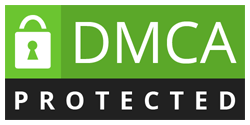solution
Case Studies
Online mini-case Studies: Equal opportunities and managing diversity – the law and associated concepts
Case One
Antlers is a department store selling a range of clothing and homeware. It recently advertised for a sales manager for the women’s clothing section. The sales manager role involves compiling staff rotas, stock control and the day-to-day management of the shopfloor, including the changing rooms. It received numerous applications, including one from Tom Chivers a sales assistant who had worked in the electrical department for the past four years. Linda Williams, another sales assistant who had worked at the store for two years, was given the job. Tom asked for feedback from the HR manager as to why he had not even been interviewed for the role and was told that it would have been inappropriate to recruit a man to the post. Tom is considering whether to make a claim for sexual discrimination.
- Do you think that Tom has been discriminated against in this instance?
- If Tom was to point out that the manager of the men’s clothing department was a women, do you think that this would strengthen his claim?
Case Two
David Portner has worked for Roygbiv Solutions – a multinational consultancy – as a software programmer for five years. After a seizure in the workplace, David was diagnosed with epilepsy. Since this initial seizure, Tom has experienced several sleep seizures and chose to take unpaid sick leave for a month. As a result of his seizure, David has had his driving licence suspended and is unable to drive for a period of at least one year. Having tried various medications, David’s doctor is now confident that his epilepsy is manageable and David has decided to return to work. However, David has now been informed that that he has been summarily dismissed by Roygbiv on the grounds of capability. His line manager indicated to David that this was because he was now unable to drive to client sites as a required part of his role. Prior to his seizure, David had been required to drive to a client an average of three times a year.
- What are the pertinent issues in this case regarding the lawfulness of David’s dismissal?
Case Three
Sonia Spellman has worked at the city law firm – Verlaine, Smith and Lloyd – since qualifying as a lawyer ten years ago. She has long been seen as a rising star and has played a prominent role in a number of high-profile cases. On the basis of her professional reputation, she has attracted a number of clients to the firm and is highly respected among her peers. Last year, she was put forward for a partnership at the firm, but lost out to another female colleague, several years her senior. This year, she was again put forward for partnership but was overlooked in favour of a male colleague, Dan Draper, with a similar degree of experience but a considerably less acclaimed reputation. She has since learnt that Dan is the nephew of a current partner and regularly socialises with senior male figures at the firm. After raising a formal grievance with the HR manager at the firm, Sonia has found that she has been marginalised on a number of large cases and assigned to work normally done by a more junior lawyer.
- What evidence is there in this case of structural, institutional and individual discrimination?
- On what grounds might Sonia be able to make a claim for discrimination?
Case Four
Brendan Fraser qualified as a teacher in 1990 following a prior career as a journalist and had since worked in two schools rising to one of the highest pay grades for teaching positions. Shortly after his sixtieth birthday, he and his wife relocated to another part of the country and Brendan applied for a job as a Year Two teacher at St. Jude’s primary school. The job advertisement’s main stipulation was that applicants had ‘the potential for or demonstrable evidence of an ability to lead English or maths at the school’. Brendan had been both Year Two teacher and English coordinator at his previous school for the past five years. The job advert also stated that the role ‘would suit candidates in the first five years of their career’. Having applied for the job, confident of at least an interview, Brendan found out that he not even been shortlisted. He phoned the school to enquire why he had not been interviewed and was told that due to budgetary cuts the school had wanted to employ a ‘cheaper’ teacher. He was told that the school had appointed a female newly qualified teacher who had just completed her PGCE (Postgraduate Certificate in Education).
- On what grounds might Brendan make a claim for discrimination in the handling of his application? On what grounds might St. Jude’s (or the associated local education authority) contest the claim of discrimination?
Case Five
Elsa Donnelly had worked as a waitress at Lucio’s, a highly regarded restaurant situated in the City Hotel, for six months. During her time at the restaurant she was repeatedly subjected to aggressive harassment by the head chef, Lucio Gonzalez. During this time, Gonzalez made sexually suggestive comments, both in person and in unsolicited phone calls, and exposed himself to the waitress. As an employee of the hotel, Elsa complained to the HR manager who told her that she would deal with the problem. The HR manager spoke to Lucio but no further action was taken. After her initial complaint, Gonzalez became increasingly abusive towards her. Elsa subsequently resigned her position.
- On what grounds could Elsa make a claim under anti-discrimination legislation?
- What evidence is there in this case of structural, institutional and individual discrimination (Pincus, 1996)?
"Looking for a Similar Assignment? Get Expert Help at an Amazing Discount!"


